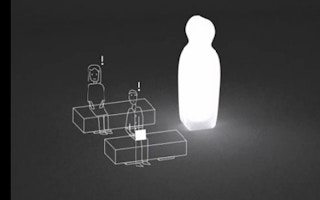Sustainable cities in the future may have housing clusters that float on the sea and containers that use soil instead of electricity to keep food cool, according to award-winning designs by Singaporean students.
These were two of the winning ideas announced on Friday at a ceremony hosted by Dutch electronics firm Philips, which organised a contest called ‘Future Living Spaces in Singapore’ for students to design solutions to urban problems such as rapid urbanisation, ageing populations and the effects of climate change.
The top award of $2,000 for ‘Best Idea’ went to a Nanyang Academy of Fine Arts (NAFA) student, named Lita (given as her full name), for her ‘Soil Box’ idea.
Lita designed the futuristic-looking soil box to naturally cool food using soil and plants as insulators. The box uses moisture from inside the storage compartment to water herbs growing on the outside of the box. By stacking multiple boxes, people can use the top of the boxes as an extra workspace in the kitchen.
Robert Tomlin, chairman of the board for the DesignSingapore Council, an agency set up by the Ministry of Information, Communications and the Arts, told the assembled students that he wanted to see more people using good design to develop user-friendly solutions to urban problems.
“It’s your world, and you are going to have to fix some of the problems created by my generation,” he said.
A team of architecture and engineering students from Singapore Polytechnic won $1,500 for their G-Float concept, a cluster of small, cube-shaped houses that can be linked together by sliding platforms to create floating neighbourhoods. The cubes generate their own energy through solar, wind or wave energy and can incorporate communal areas in between cubes to grow food or farm fish.
The Singapore Polytechnic students, who completed the project as part of a two week workshop, told Eco-Business that they used the minimalist cubes because they wanted to modernise Singapore’s traditional village, or kampong, community concept for a future that may include sea level rise and increased flooding.
Competition judge Low Cheaw Hwei, who is global creative director of Philips Design, said that although the floating residences idea was not necessarily new, it was innovative in its scaleability and flexibility.
Another NAFA student, Cindy Woeng, won the third prize for her public lighting project entitled ‘Soul’. ‘Soul’ is an outdoor lighting system that uses sensors to change lighting according the number of people present. The student said the project was meant to encourage social interaction in urban settings.
More than 60 students or teams entered the contest by submitting their ideas in three minute YouTube videos. Online voting by over 12,000 individuals determined the top twenty finalists for the competition. In the final stage of the contest, a judging panel of five experts with design, sustainability and media expertise chose the three winners.
The head NAFA’s 3D design department, Sabrina Long, told Eco-Business after the ceremony that the competition provided timely, valuable learning experiences for the students.
Designers can no longer focus only on creating products that look good, she noted, adding that the competition gave students an understanding of the industry concerns they would be required to address, such as cost-savings, environmental friendliness and social impacts.
Ms Long said that the students had learnt how to design with purpose and how to tackle design solutions for urban issues in simple ways.

















